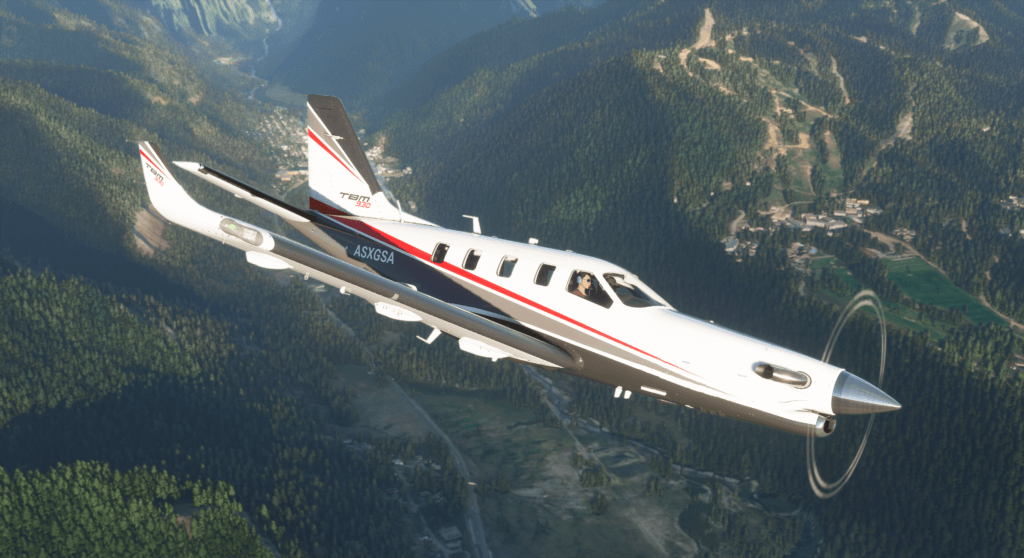Microsoft Flight Simulator is even better with an Oculus Quest 2
Using the Oculus Quest 2 with Microsoft Flight Simulator is like playing a whole new game.

Back when I reviewed Microsoft Flight Simulator, I thought it was one of the best games of the year. At a time when you couldn’t leave your house, Flight Simulator allowed you to travel the world, and fly over everything from the pyramids to the Great Wall of China. More than just a sightseeing tour, though, Flight Simulator provides an incredibly realistic look at a number of aircraft, from tiny Piper Cubs to Boeing 747s. All in all, it’s pretty awesome.
And then I played it with an Oculus Quest 2.
All of a sudden, it was as if I was playing a completely different game. No wrap-around monitor setup could possibly compare with the immersiveness of a VR headset.
It was somewhat easy to set things up. I downloaded the Oculus desktop software and plugged the headset into my laptop using the Oculus Link Cable ($79). You can also do this via Wi-Fi, but I wanted the assurance of a more stable connection. From the Oculus app, you have to enable unknown sources in the settings so it’ll work with apps outside of the Oculus store.
I then fired up Microsoft Flight Simulator, and in the General Settings menu, selected the VR headset. To dip my eyes into the VR experience, I chose one of the exploratory flights around Paris. At once, I was transported inside the cockpit, with the Eiffel Tower and Champs D’Elysees right outside the window. Turning my head, I could look around the cockpit and actually watch as the controls moved when I turned the plane. I could look up and see the sky, or just stare out the side to watch the sights roll by.
I gained a new appreciation for the details inside the cockpit, too; the textures of the plastics, metals and leather seats all took on a new level of realism. At first, I thought that the instrument dials were a bit fuzzy; I then leaned forward, and they came into focus and gained detail. Incredible. The headset even managed to show such intricacies as small scratches on the plane’s canopy and distortions of light as the Sun reflected off the glass.
It wasn’t perfect; there was a bit of jitteriness here and there as the headset tried to keep up with the imagery outside the airplane. I also noticed that the headset would sometimes have trouble rendering a support pillar of the plane if I turned around too much, or came too close to where it was.
I also got a bit dizzy if I moved the plane around too fast; I’m a bit prone to motion sickness, as I discovered during my DJI FPV drone review. I attempted a few barrel rolls in Flight Simulator, but for the most part kept things to slow and steady turns.
The other trick is that you have to learn how to control the plane completely by feel; you can’t use the Oculus VR controllers with Flight Simulator, so you have to rely on a joystick and keyboard commands. If you’ve got a headset on, there’s no way to know which button you’re pressing, unless you’ve memorized the layout. More than once I lowered the flaps or turned the engine off because I pressed the wrong button accidentally. It would be pretty fantastic if I could reach into the virtual environment with my hand to flip a switch or turn a knob; I’m sure it’s just a matter of time until that’s possible.
There’s also the issue that in order to use the Oculus Quest 2, you’ll need a Facebook account; if you’d rather not deal with the social network, check out our list of the best VR headsets, as a few of them will also work with Microsoft Flight Simulator.
Now if you’ll excuse me, I’m just going to revel in flying all around the world, without worrying about baggage fees and crying babies.
Sign up to get the BEST of Tom's Guide direct to your inbox.
Get instant access to breaking news, the hottest reviews, great deals and helpful tips.

Michael A. Prospero is the U.S. Editor-in-Chief for Tom’s Guide. He oversees all evergreen content and oversees the Homes, Smart Home, and Fitness/Wearables categories for the site. In his spare time, he also tests out the latest drones, electric scooters, and smart home gadgets, such as video doorbells. Before his tenure at Tom's Guide, he was the Reviews Editor for Laptop Magazine, a reporter at Fast Company, the Times of Trenton, and, many eons back, an intern at George magazine. He received his undergraduate degree from Boston College, where he worked on the campus newspaper The Heights, and then attended the Columbia University school of Journalism. When he’s not testing out the latest running watch, electric scooter, or skiing or training for a marathon, he’s probably using the latest sous vide machine, smoker, or pizza oven, to the delight — or chagrin — of his family.
-
RogerInCalif Funny that this article came up this morning - just last night I played FS for the first time on my Quest 2 and - you're right! It is completely different and amazing! Sooo much better than playing it pancake mode. If you're into MSFS I'd say get a Quest 2 even if you only use it for FlightSim. And by the way you don't need the official $79 USB cable, any good quality USB-C cable will work.Reply
